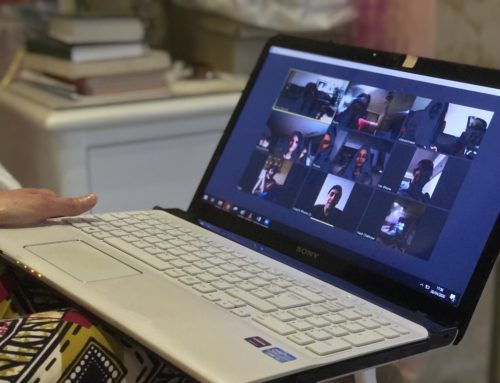Scandal’s badass and fictional White House Communications Director Olivia Pope could solve a nuclear level crisis…IN AN HOUR. But I am assuming that during the course of this year [and this might come as a surprise to your co-workers] that you are NOT Olivia Pope.
In the real world of fast-moving news stories, you need a little more time and preparation for crisis communications.

When Peter Panepento and I wrote Modern Media Relations for Nonprofits, we included a section of the book to cover crisis communications. We thought we had seen it all. From controversial staff departures to hot-button public issues, Peter and I had coached nonprofits through what we understood [at the time] to be critical crisis moments.
Then along came 2020!
The hot mess of civil unrest, cancellations, closings, re-openings, and closing again have created little crises everywhere. If it feels like you need an Olivia Pope style intervention, you are not alone.
How do you handle crisis communications WHEN THE WORLD IS IN CRISIS? Well, Peter and I will cover this in an upcoming webinar on August 13th.
But until then…
What Would Olivia Pope Say to Communications Directors in Crisis?
Remain Calm: Put on your mask first; oxygen, that is. Remember that pre-COVID moment when you were sitting on a plane and the flight attendant demonstrates how to put on a mask and then encourages us to remain calm and take care of ourselves first? That was a life lesson.
Olivia was always telling people to calm down when they showed up in her office in a panic. She often started by telling everyone to BREATHE.
It’s hard to be a fixer if you are operating in a heightened state of panic. But this isn’t new for communications directors. As Kivi points out in her book, CALM not BUSY, chaos tends to land on the desk of the communications director.
Kivi writes:
“Many nonprofit communications directors feel like they work in a constant state of chaos. You might feel worn out because there are simply too many things to do. You likely have too many choices and too many decisions to make on each item on your to-do list, compounding the chaos.”
Kivi wrote this in her book pre-COVID, but doesn’t this sound familiar?
“You might feel rudderless. Your boss either doesn’t consistently provide strategic direction, changes that direction frequently, or has left you alone to figure it out…
Communications work is fast-paced and constantly changing. The job of a nonprofit communications director is so varied from nonprofit to nonprofit that there is no common job description or playbook to follow. Everyone—even those nonprofits that really seem to have their acts together—is making this up as they go.”

From the outside looking in, panic will start to show in your communications. Some of what I have received from nonprofits during COVID seems rushed and frantic. One organization sent a note in an email about cancellations that I am positive it was incomplete. If you feel like you are living in a constant state of crisis, it’s okay to ask those around you to slow down. Close your eyes, imagine Olivia with her hands gently on your shoulders before you send out the next urgent email.
Don’t go low, stay high: Yep. Olivia would put her hands squarely on your shoulders, look you straight in the eye at close range, and tell you this. This is also NOT the time for pouting and tantrums online. This is not the time for arguments on social media. Sharp communication professionals understand that in times of crisis, it is easy to point fingers, get angry, respond in frustration, and the like. However, blaming and pointing fingers just makes you look like you do not have a firm grasp on the issue and/or problem at hand. Even if the crisis was not caused by your organization, even if you are the one responsible (or left) to clean up the mess – respond carefully, not with snark and sarcasm.
Focus on opportunities: Olivia Pope: “We are not out of options. I am not out of options. I am never out of options.” When responding to a crisis, it is important to be both in the moment and of the future.
What does this mean? Well, it means that when it comes to crises, it is important to be as many steps ahead of everyone else as possible. Think about not just your Plan A or B, but your contingency plans C through Z. The more ways you can think of for the situation to play out, the more ways you can plan to respond. Sure, everyone hopes things work out the way they plan, or at the very least, the way they SAY they plan for them to go.
But, if 2020 has taught us anything, it is that the moment you think you have a handle on something, that’s the moment you realize you don’t have a handle on anything. In times of crisis, the situation can turn on a dime and you need to be ready to respond to those changes. Actually, you need to be responding to as many of those changes as you can BEFORE they happen. Answering hard questions before they are even asked is a great way to put forth a message of confidence and control over the situation.
I am sure this is where Olivia would tell you: “You look like you’ve got it covered because YOU DO have it covered. No questions. No confusion.”
Be honest: “The truth is scary. But it is also powerful.” Last week, I found out that a nonprofit that has provided services for my mother while she lives in a nursing care facility will shut down permanently. I worried about their work when nursing care facilities in our state closed their doors to anyone other than staff and medical professionals. Communication throughout the pandemic has not stressed the sense of urgency. Staff people were terminated (probably the communications director). The lights went out on emails. When I contacted a recently laid-off staff person, I asked why they didn’t let donors and supporters know they were going through a crisis. A leadership decision was made to say nothing since they were not essential. While their services are not considered “essential,” the joy brought to my mom and fellow residents was vital. I guess I believed in their mission more than their leadership.
Find the silver lining: Some of the best examples come from organizations that take the time to feature staff’s personal stories or give virtual tours of their offices. One domestic violence shelter had an outbreak of COVID and had to close their doors. The shelter took the time to paint its location. It was something needed for years, but personnel struggled with closing the doors for service in order to make necessary building updates. Instead of focusing on having to close temporarily for shelter services, the communications director uploaded pictures online of the new and improved family room and playroom. The organization was even able to raise some building fund money in the process along with new toy donations for the reopening of the shelter.
Over the summer, I helped a festival that waited a little too long to cancel its press release that originally began with … “Due to the Governor’s Executive Order….we regret to inform you that…” to instead shift the focus on the fun things they COULD do. This included virtual tours and a focus on vendors that had signed up for the festival. They had an impressive online turnout and picked up a few new vendors along the way.
Now is the perfect time to prepare for the next crisis. Because this too shall pass…but maybe not a quickly as we all thought. And even the dynamic Olivia Pope would struggle in 2020.

On August 13th, Peter and I will be focusing on real scenarios rather than the fictional Olivia Pope.
We’ll prepare you for some common types of crises, including:
- Internal scandals in which a member of your staff or board has acted inappropriately
- Situations in which your organization’s financial decisions or practices are called into question
- External events, such as George Floyd’s murder, in which your organization needs to consider taking a public stand
- Disasters and pandemics
We’re updating our playbook from Modern Media Relations to prepare you for communications in a world of crisis. Join us for the webinar, so that you can say, “It’s Handled!”





